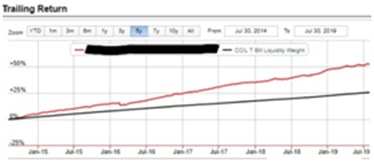

Update


Update
In the past weeks, we have been receiving several calls and queries from our investors and prospective clients raising concern on the behaviour of the markets. Most are focused on how equities are performing which to us, is not surprising considering that retail investors have most of their money either in equity Mutual Funds or direct equity stocks.
However, the increase in queries based on our discussions appears to have been triggered by a series of destress in debt. That means news reports and information flow has focused on companies unable to repay the loans they have taken from banks and other financial institutions. Retail participation in debt products also called fixed income is negligible. It is so low that it pushed the Association of Mutual Funds of India (AMFI) to suggest that the government should allow the launch of Debt linked savings schemes (DLSS) with similar tax benefits as Equity-linked savings schemes (ELSS) under 80C of the income tax guideline.
Here is why we think debt is good for you as an investor in fixed income Mutual Funds schemes. We analysed two funds: one, an aggressive Hybrid debt fund and the second an aggressive debt fund. The former is defined as have 25% exposure to equity and 40% exposure to Government securities. The latter is defined as having 100% exposure to corporate debt (fund manager lends money to companies) with 50% exposure to lower-rated securities (aa & a-). Higher the rating the lower the risks and return. Lending to a Triple AAA rated company is perceived to be low risk in comparison to Double AA - rated companies or Single A - rated companies.
Both funds we compared have similar features, for example, both had 1-year exit loads, the expenses were almost similar, both funds were managed by Asset managers who have been in India for over two decades and similar tax treatment. Here is what we found:

Fund A: Aggressive debt hybrid fund

Fund B: Aggressive debt fund
Here is what we conclude from analysing both funds from 02 January 2015 to 26 July 2019. The reason we chose this period, was to analyse our data in a context where equity markets were generally performing most of the time, whilst at the same time, debt markets were facing stress in terms of rising interest rates and defaults.
| Time Period | NAV of Debt Hybrid | NAV of Pure Debt |
| 02 January 2015 | 33.84 | 2801.89 |
| 26 July 2019 | 46.17 | 4047.98 |
| Absolute return 4.6 years | 36.43% | 44.48% |
We now understand why many of our investors and prospective clients are raising concerns. Most have invested in Hybrids (either equity or debt) but few have investments in pure debt. If an investor had invested in January 2015, he/she would have experienced a CAGR of approximately 9.66% in a pure debt fund in comparison to 7.95% in a debt hybrid fund. Remember, fund A has 25% equity exposure and hence is supposed to give superior performance in comparison to fund B which has no equity exposure. The alpha or additional return lost by investing in a debt hybrid is 1.71% annually. An investment of Rs 10 lakhs would have fetched an additional return of Rs 17,100 per year that’s almost Rs 80,000 over 4.6 years.
Risk is a relative term but needs to be understood in a sense that it makes sense. Investing in a debt hybrid which is riskier than a pure debt fund has given a lower return. It doesn’t make sense to take higher risk for a lower return. We, therefore, conclude that its time you put your money in an investment that pays you well over the long-term. Time to invest in pure debt funds.